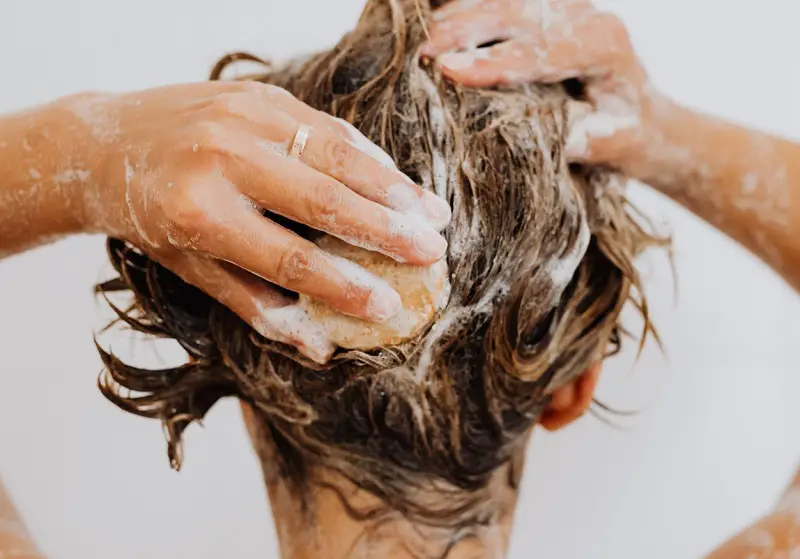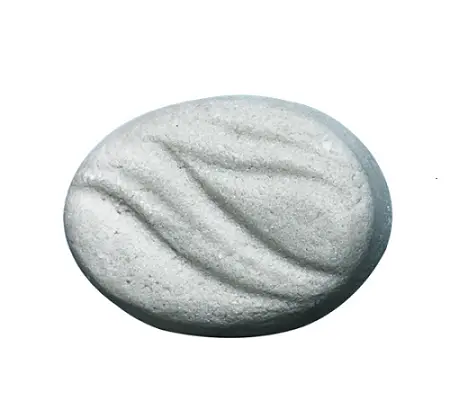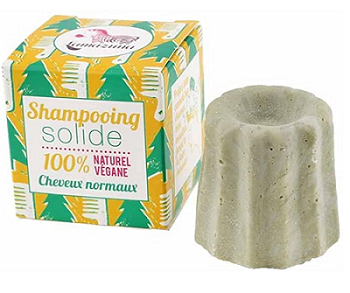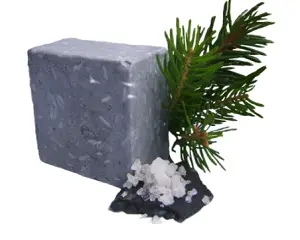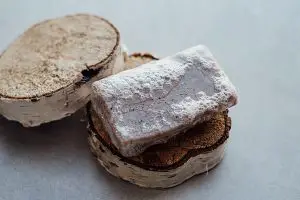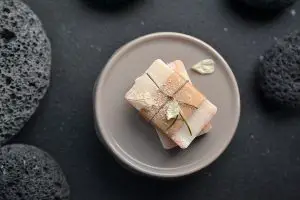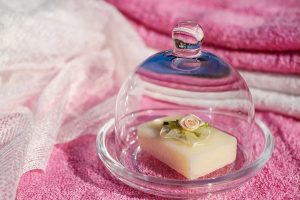Have you decided to change your hair routine to going natural, but you are missing some habits? Your solid shampoo does not or does not foam enough to your taste and therefore you hesitate to swap your little pebble again for your faithful foaming ally: the bottle of liquid shampoo. So, how to get a solid foaming shampoo?
In this article we will see together why your solid shampoo does not foam and in this case it's not such a bad thing for your hair. Then we will see how to make a homemade solid shampoo foam well. And finally if you prefer to let yourself be seduced by a solid shampoo that is already ready-made, we will see which solid shampoos lather the best.
In this section:
How to have a solid foaming shampoo?
We will first see the reasons for a solid shampoo that does not foam. Then we will see that there is still a solution to make it foam better. We will then see how to make a solid shampoo that foams.
Why is your solid shampoo not foaming?
Where does the lather come from in conventional liquid shampoo and solid shampoo? Why is your solid shampoo not foaming? What are the phenomena that create a greater or lesser amount of foam?
The foam of your shampoo simply depends on the surfactants used. Surfactants are the washing base of all shampoos. There are more or less natural and more or less foaming. This is what will make the difference between a liquid shampoo and a solid shampoo in terms of the amount of foam.
 In a conventional liquid shampoo, the foam is formed thanks to the surfactants that we call sulphates. They are aggressive surfactants for the scalp and hair. They are inexpensive, which is why they are used in liquid shampoos. They are found under the following names:
In a conventional liquid shampoo, the foam is formed thanks to the surfactants that we call sulphates. They are aggressive surfactants for the scalp and hair. They are inexpensive, which is why they are used in liquid shampoos. They are found under the following names:
- Sodium Lauryl Sulfate (SLS),
- Sodium Laureth Sulfate (SLS),
- Ammonium Lauryl Sulfate ALS,
- Sodium Lauryl Sulfate LSS.
These sulfates are surfactants which foam in very large quantities on contact with water. The foam is therefore the result of a chemical process, nothing more. The problem with these sulfates is that they dry out the hair fiber and irritate the scalp. So to compensate and hide these inconveniences, conventional shampoos are stuffed with silicones which have the task of rolling up the hair fiber and giving it a shiny and silky appearance. It's camouflage! Your hair is getting damaged, and you don't even notice it.
All of this can be avoided by understanding that it is not the amount of lather that determines whether your hair is washed well or not. The foam serves above all to simplify the distribution of the product on the hair, and it has become a visual marketing argument to mean that the product washes deeply. Yet it scours just as much as it washes the scalp. In short, it is therefore the surfactant which washes, but whether they are foaming or not, this does not change its washing efficiency.
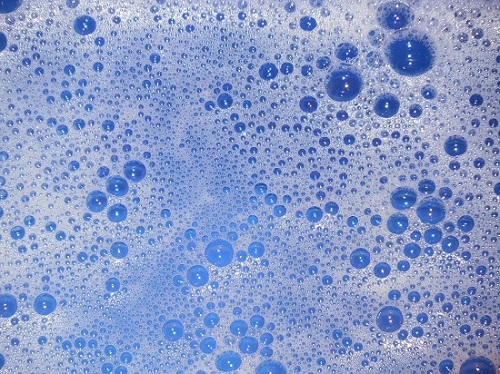
 You will understand, a solid shampoo that foams does not mean that it washes better than another. In a solid shampoo, there are various ingredients that wash just as well as a conventional shampoo. However, unlike, they are natural and therefore foam less! Among them are the mild and very mild surfactants and mineral, vegetable or ayurvedic powders.
You will understand, a solid shampoo that foams does not mean that it washes better than another. In a solid shampoo, there are various ingredients that wash just as well as a conventional shampoo. However, unlike, they are natural and therefore foam less! Among them are the mild and very mild surfactants and mineral, vegetable or ayurvedic powders.
 Soft and very soft surfactants. They are found under these names:
Soft and very soft surfactants. They are found under these names:
- Sodium Cocoyl Isethionate (SCI),
- Sodium Coco Sulfate (SCS),
- Coco glucoside,
- Decyl Glucoside,
- Disodium Cocoyl Glutamate and many more.
These surfactants are much less aggressive for the hair, but often much less foaming than chemical sulphates such as SLS or ALS. And yet even with barely foaming, they clean perfectly well.
 Mineral or vegetable Ayurvedic powders: It is powders are naturally washing. They may even be sufficient on their own to wash the hair. Some use them as a shampoo by simply mixing them with a little water. Even this way they cleanse the scalp perfectly well! And it's 100% natural! Some examples of these powders that we find regularly: reetha, sidr powder, rhassoul, nettle, clay and shikakai. However, they do not allow to have a solid foaming shampoo.
Mineral or vegetable Ayurvedic powders: It is powders are naturally washing. They may even be sufficient on their own to wash the hair. Some use them as a shampoo by simply mixing them with a little water. Even this way they cleanse the scalp perfectly well! And it's 100% natural! Some examples of these powders that we find regularly: reetha, sidr powder, rhassoul, nettle, clay and shikakai. However, they do not allow to have a solid foaming shampoo.
 The foam of a shampoo does not reveal its washing power. But on the contrary its more or less chemical process. More than trying to find a solid shampoo that foams, we advise you to live to use it. Indeed, the use of a solid shampoo is a habit to take in hand. Rub your pebble in your hands after getting it wet. Wait for it to foam a little and apply it on your scalp. Massage delicately, trying to distribute it well. If you feel like you haven't cleaned some areas, just start over! Be careful, without overdoing the product in the hope that your solid shampoo will be as foaming as a liquid shampoo! A small amount of shampoo is enough to wash, even if it does not foam very much!
The foam of a shampoo does not reveal its washing power. But on the contrary its more or less chemical process. More than trying to find a solid shampoo that foams, we advise you to live to use it. Indeed, the use of a solid shampoo is a habit to take in hand. Rub your pebble in your hands after getting it wet. Wait for it to foam a little and apply it on your scalp. Massage delicately, trying to distribute it well. If you feel like you haven't cleaned some areas, just start over! Be careful, without overdoing the product in the hope that your solid shampoo will be as foaming as a liquid shampoo! A small amount of shampoo is enough to wash, even if it does not foam very much!
Make a strong shampoo that foams
As we have seen, a solid shampoo that does not foam is quite normal. It is therefore not easy to find on the market, or to manufacture, a solid foaming shampoo. Its washing base is more creamy than foaming. However, if you make your own shampoo, there is a trick to making your solid shampoo foam better: choose the right combination of surfactants!
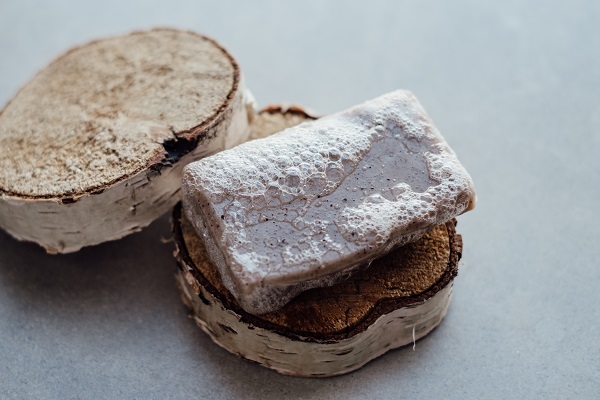
- For your solid shampoo to foam, the best combination is: Sodium Cocoyl Isethioniate (SCI) + Sodium Coco Sulfate (SCS).
 SCI is a surfactant derived from coconut oil that contains no sulfate. Therefore it is very soft and it is very well tolerated by the skin. It offers a creamy but not very abundant foam.
SCI is a surfactant derived from coconut oil that contains no sulfate. Therefore it is very soft and it is very well tolerated by the skin. It offers a creamy but not very abundant foam.
 SCS is also a surfactant derived from coconut oil. It is qualified as mild because it contains a slight amount of sulphate which makes it slightly less well tolerated than IBS. However, it foams much better than the latter.
SCS is also a surfactant derived from coconut oil. It is qualified as mild because it contains a slight amount of sulphate which makes it slightly less well tolerated than IBS. However, it foams much better than the latter.
To obtain a solid shampoo that foams, while giving your skin a gentle wash, it is best to combine the two surfactants together. Know that the more you put a great propensity of SCS in your preparation, the more it will foam! So it's up to you to dose according to the rendering you want by reducing or increasing certain doses.
- Also keep between 40 and 60% surfactants in your recipe if you want your solid foam shampoo. Below 40% it will be difficult to have a good foaming effect. Above 60%, surfactants can damage your scalp. In this way, you will also prevent your solid shampoo is crumbling.
- For get a solid foaming shampoo when using your solid shampoo, emulsify it well in your hands by wetting it first. Foam is the result of friction between water and surfactant. It is therefore only in contact with water and by rubbing enough, that you will obtain a solid shampoo that foams.
Buy a solid shampoo that foams
We know that some are nevertheless attached to this notion of solid foaming shampoo. This is why we have selected two solid shampoos for you which are recognized for their easy emulsion and their very good foaming effect. All you have to do is choose the one that suits you!
Solid shampoo that foams - Pachamamaï - pure shampoo normal hair
Why choose it: Solid shampoo that foams perfectly well and excellent rinsability.
Solid shampoo that foams perfectly well and excellent rinsability.  With white clay and green clay for a gentle and natural cleaning.
With white clay and green clay for a gentle and natural cleaning. Leaves hair clean and silky for a long time without sticky effect.
Leaves hair clean and silky for a long time without sticky effect. Very mild primary surfactant: Sodium Cocoyl Isethionate.
Very mild primary surfactant: Sodium Cocoyl Isethionate.
Chemical composition : Sodium cocoyl isethionate, Kaolin, Cocos Nucifera oil, coconut acid, aqua, ricinus communis seed oil, sodium caproyl / lauroyl lactylate, glycerin, illite, sodium isethionate, acetum, mentha piperita oil, sodium citrate, limonene
- This shampoo is also available for different types of hair. So choose the one that matches your hair type. Note that it foams just as well in these different versions:
- SWEETIE moisturizing solid shampoo for dry, curly or colored hair.
- BALANCING solid shampoo for problematic hair (oily hair, dandruff, itching etc.).
Lamazuna solid shampoo that foams - Normal hair Sylvester pine
Why choose it: A combination of the mildest surfactants on the market and without any sulphates: Sodium cocoyl isethionate / Decyl glucoside / Lauryl glucoside.
A combination of the mildest surfactants on the market and without any sulphates: Sodium cocoyl isethionate / Decyl glucoside / Lauryl glucoside.  Quite concentrated surfactants that allow the shampoo to lather well, without attacking your scalp.
Quite concentrated surfactants that allow the shampoo to lather well, without attacking your scalp.  100% natural ingredients.
100% natural ingredients.  Pine Scots essential oil: Invigorates, gently cleanses and leaves your hair shiny.
Pine Scots essential oil: Invigorates, gently cleanses and leaves your hair shiny.
Chemical composition: Sodium cocoyl isethioniate, kaolinite, stearic acid, cocos nucifera (coconut) oil, coconut fatty acid, aqua, montmorillonite, decyl glucoside, lauryl glucoside, sodium isethionate, glycerin, pinus sylvestris leaf oil, limonene
Solid shampoo that foams MUND - Oily hair, thin or lacking in volume
Why choose it?  Free from sulfates, silicones, petrochemicals, synthetic dyes, polymers. Biodegradable and vegan.
Free from sulfates, silicones, petrochemicals, synthetic dyes, polymers. Biodegradable and vegan. Purifies the scalp while hydrating the hair (sesame and Macadamia oils).
Purifies the scalp while hydrating the hair (sesame and Macadamia oils). Contains hydrolyzed wheat proteins (close to keratin: smooth the scales and fill in damaged areas).
Contains hydrolyzed wheat proteins (close to keratin: smooth the scales and fill in damaged areas). Fairly abundant foam that rinses well.
Fairly abundant foam that rinses well.
Chemical composition: Sodium cocoyl isethionate, Aqua, Macadamia Ternifolia Seed Oil, Sesamum Indicum Seed Oil, Sodium Lactate, Abies Alba Leaf Oil, Charcoal Powder, Sodium Chloride, Cedrus Atlantica Wood Oil, Hydrolysed Wheat Protein, Pogostemon Cablin Oil, Picea Excelsa Leaf Oil , Xanthane Gum, Limonene
A solid shampoo that does not foam is therefore normal given its natural composition. It does not contain sulfates known for their foaming effect; but yet they wash just as well. If you want this foaming effect, you can still work on it. For get a solid shampoo that foams homemade, you need to add the right surfactants. And if you wish buy solid foaming shampoo, you have here some examples which have proved their worth. It's your turn!

